Alba Iulia’s tall three-dimensional white cross is a monument that was built as a tribute to the Great Union between the regions that now make up Romania; the union act was signed in Alba Iulia in 1918, and thus a unified Romania was founded.
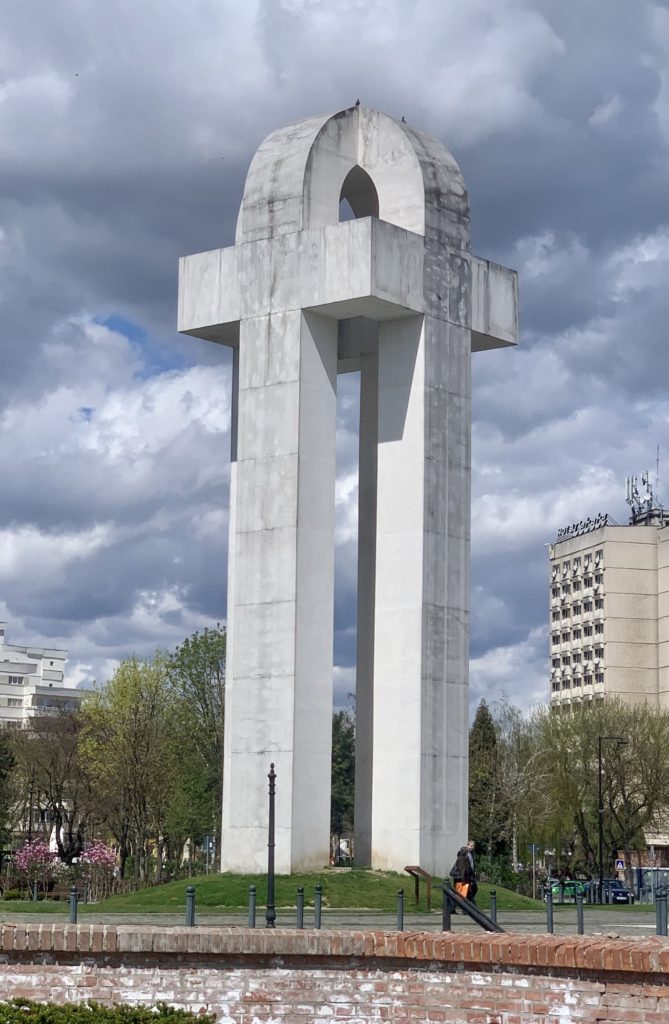
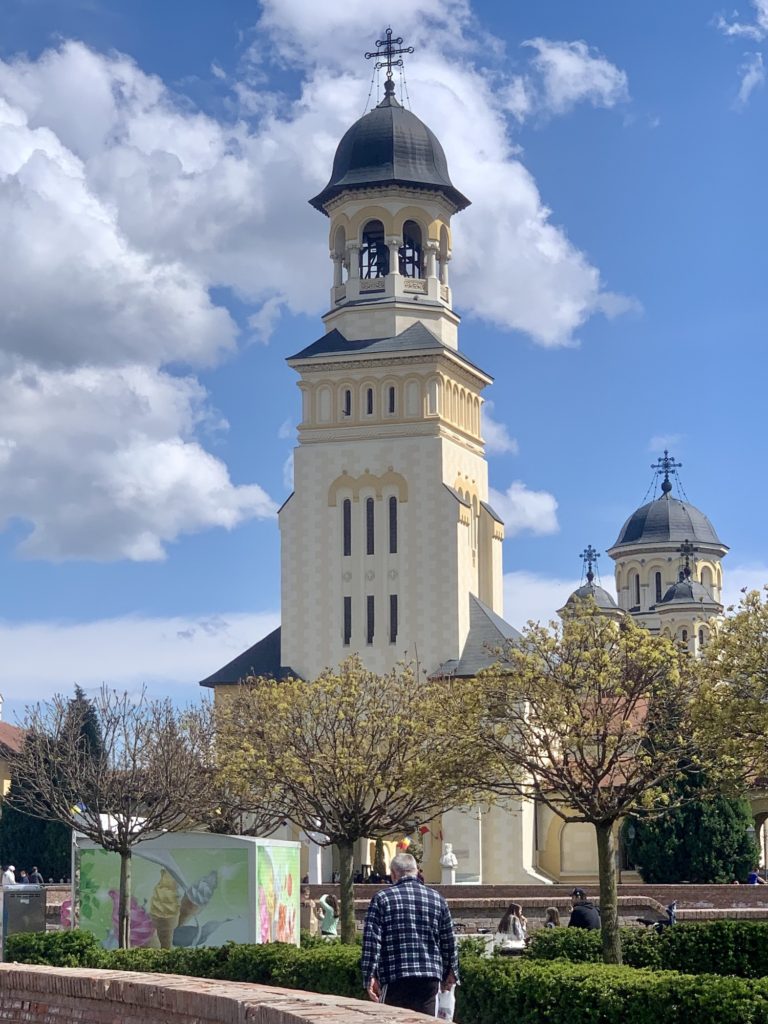
The monument is the first thing that draws my attention, but when I turn around, I can already see the fortress and the coronation church. The city is clean, the sun is shining, and it’s the day before orthodox Easter. We see many people with the same kind of small plastic container, so we start investigating what that is all about. We see them coming from the coronation church, where a couple of tables are set up in the entry archway underneath the bell tower, and we pick up a container for a small donation. My friend is given instructions: open after midnight and use to break the fast before Easter. You say, Jesus has risen, and eat a piece. Then your counterpart responds, he truly has risen, and also eats a piece. All of that in Romanian, but my friend explains it to me in English. We will open the little pale later when we are back at our accommodation, and then we will find out that it’s just dry bread, cut into cubes. Maybe it’s specially blessed.
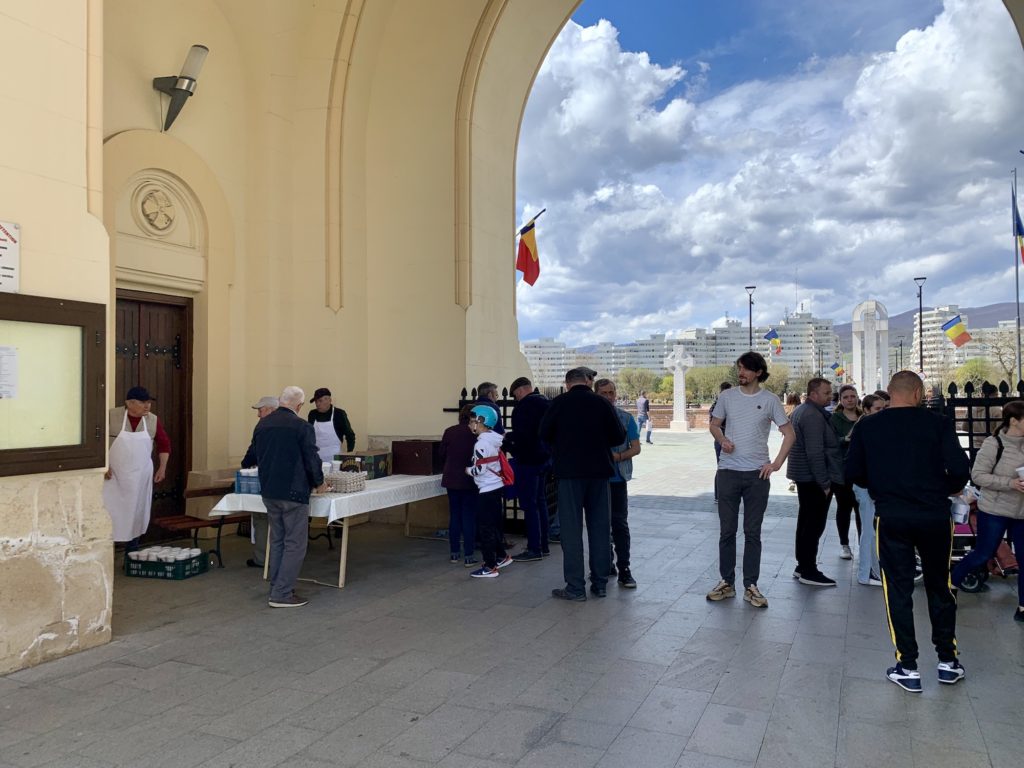
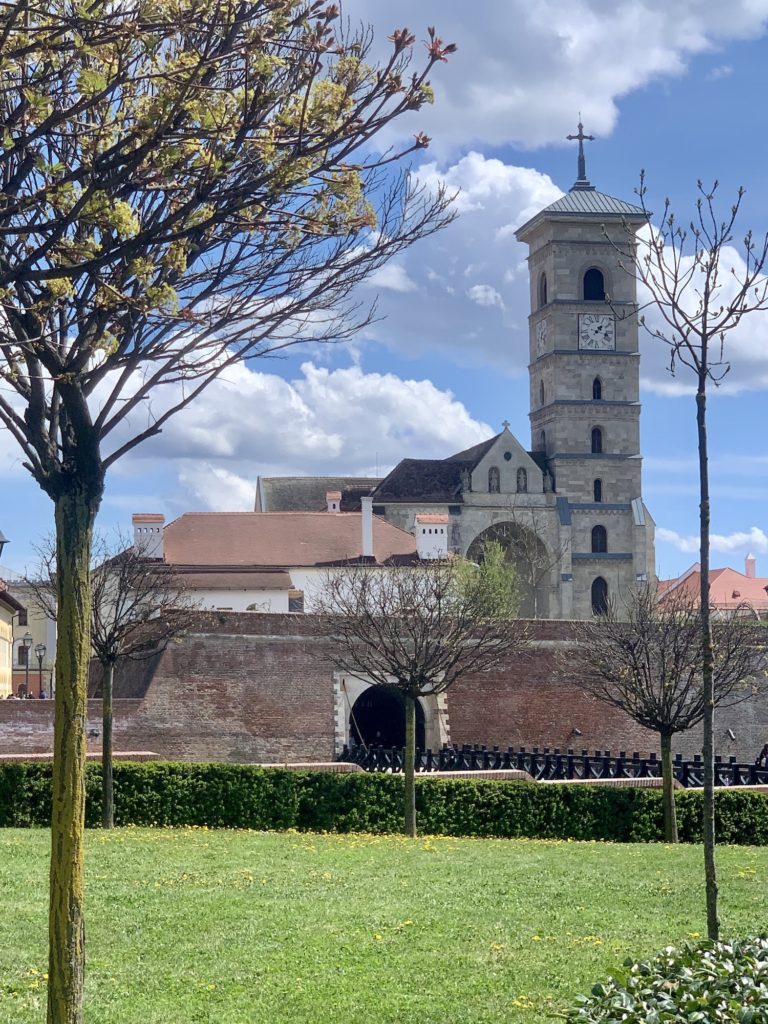
Now that we are already at the Cathedral of the Coronation, we decide to explore a little. It was built, as the name gives away, for the coronation of King Ferdinand and Queen Maria, and it symbolizes the unity of the Romanian people. A lovely garden surrounds the cathedral with archways that remind of monasteries, and in fact, we see a few nuns walking through the garden. It turns out, however, that the adjoining buildings house the archbishop’s residence and administrative offices.
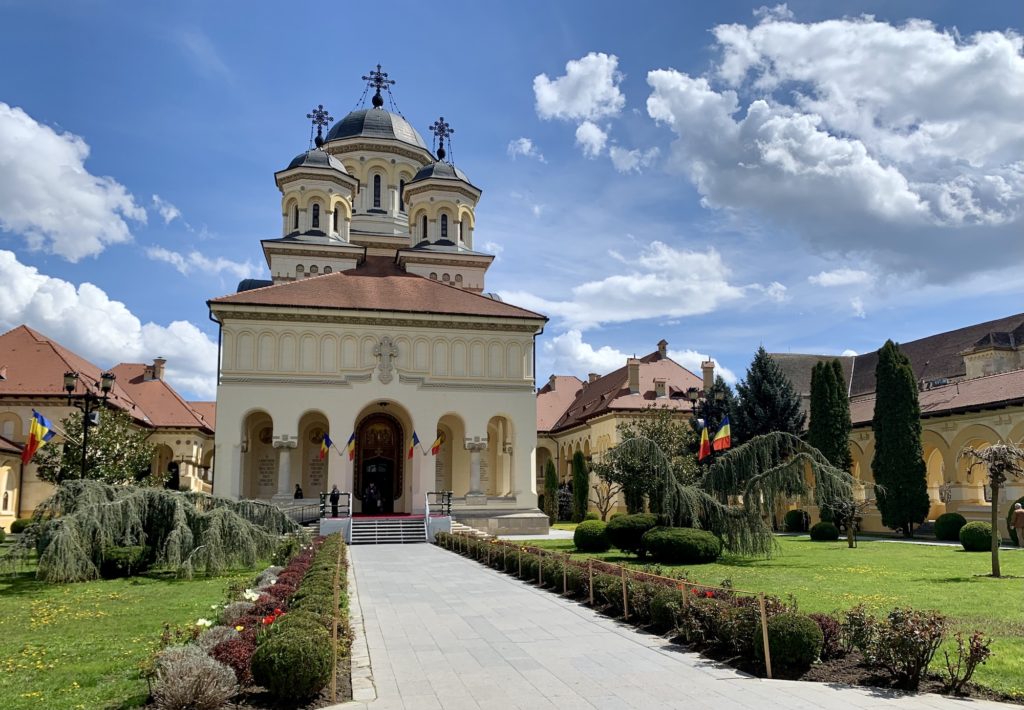
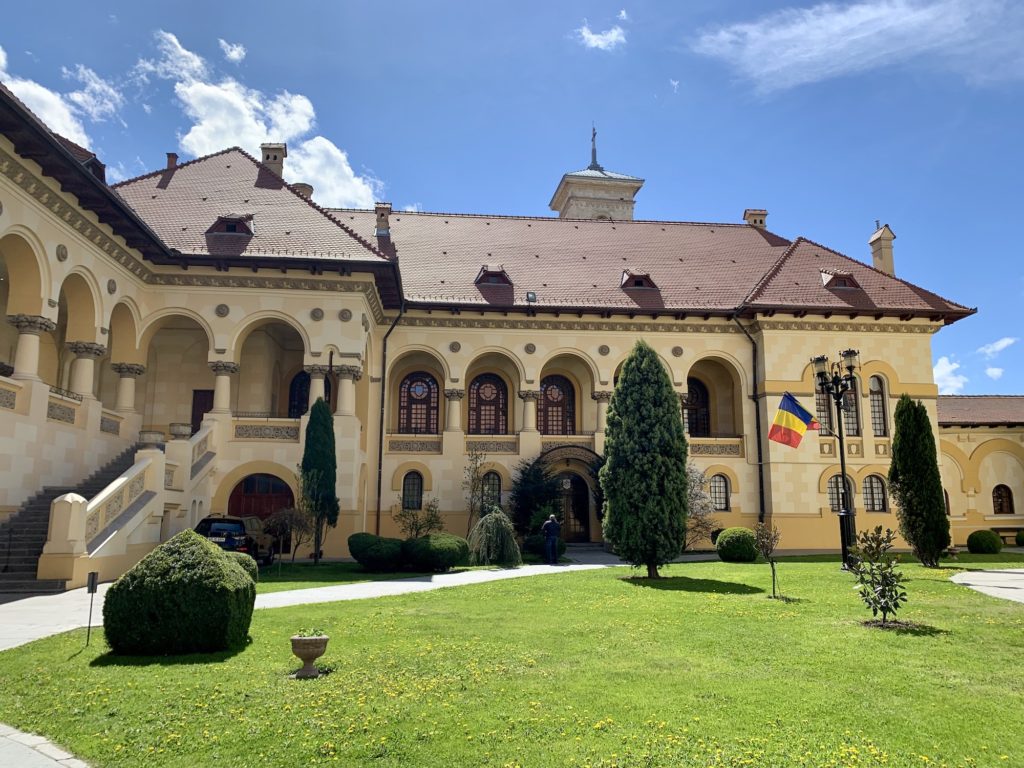
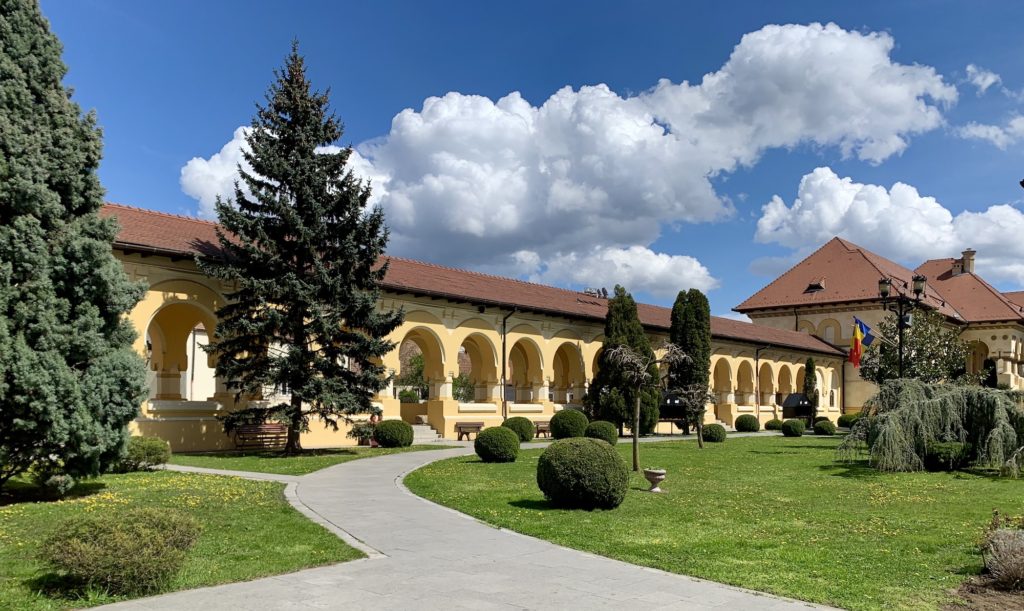
After surrounding the church, we walk up onto the portico and then inside. It is not a large church, a cross footprint with a high nave and an impressive cupola supported by marble columns; frescos cover the walls and cupola, and a lavish iconostasis carved from oak completes the altarpiece. In preparation for this night’s Easter festivities, the large chandelier’s bulbs are being replaced via a long ladder while we are there.

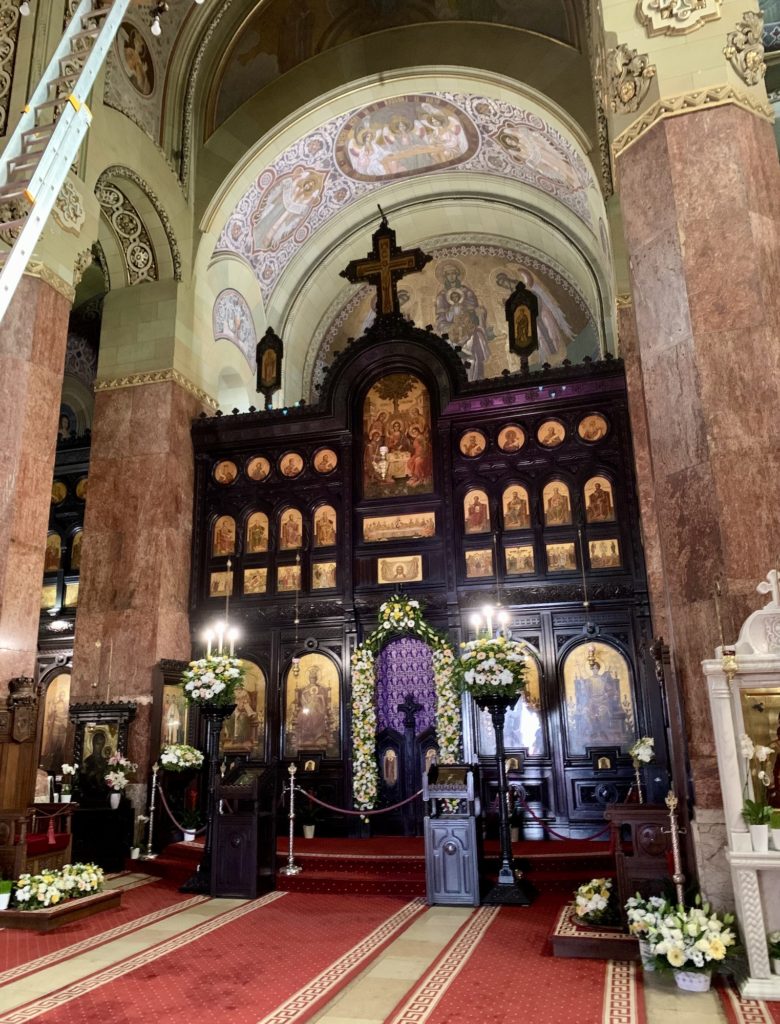
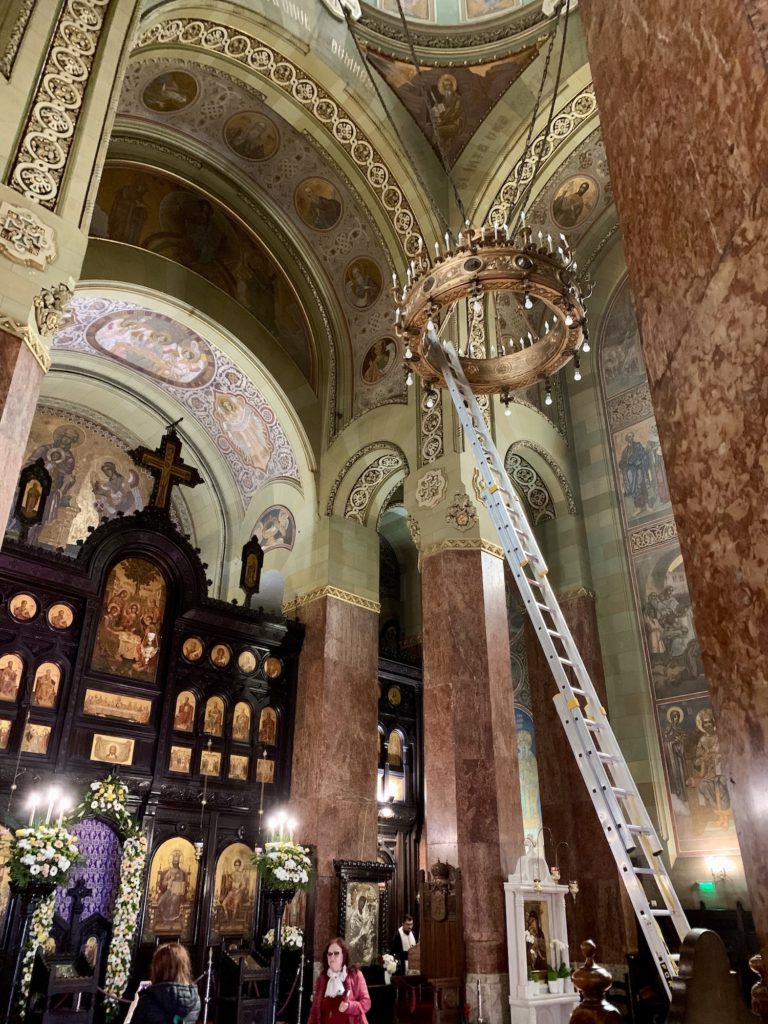
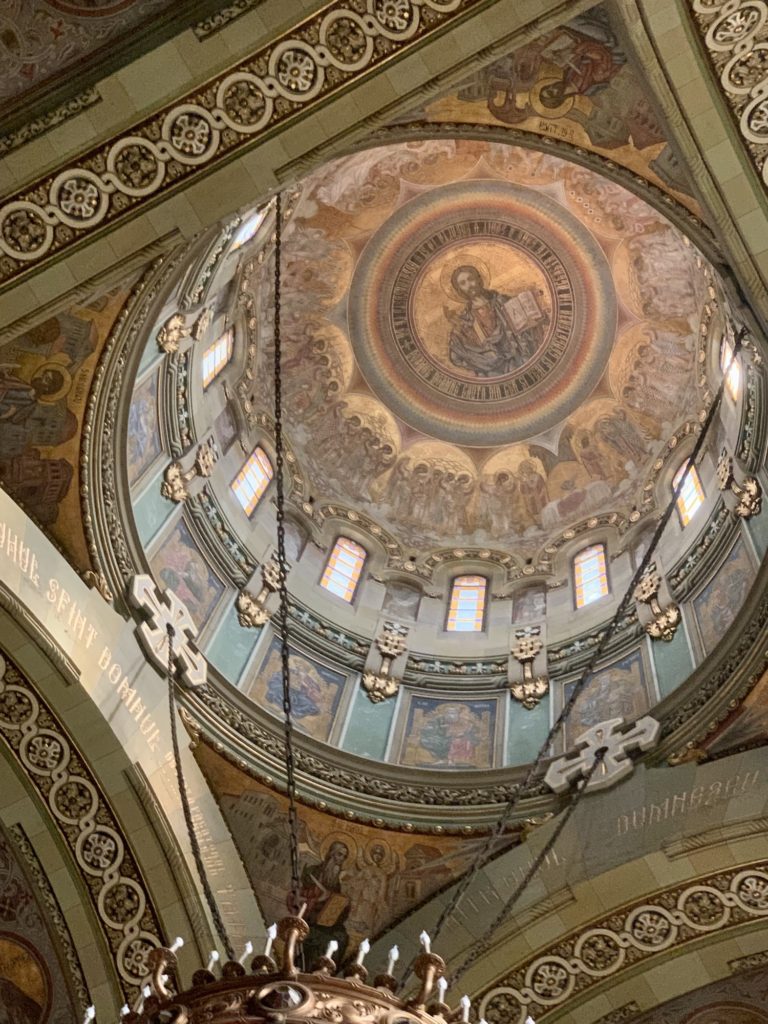
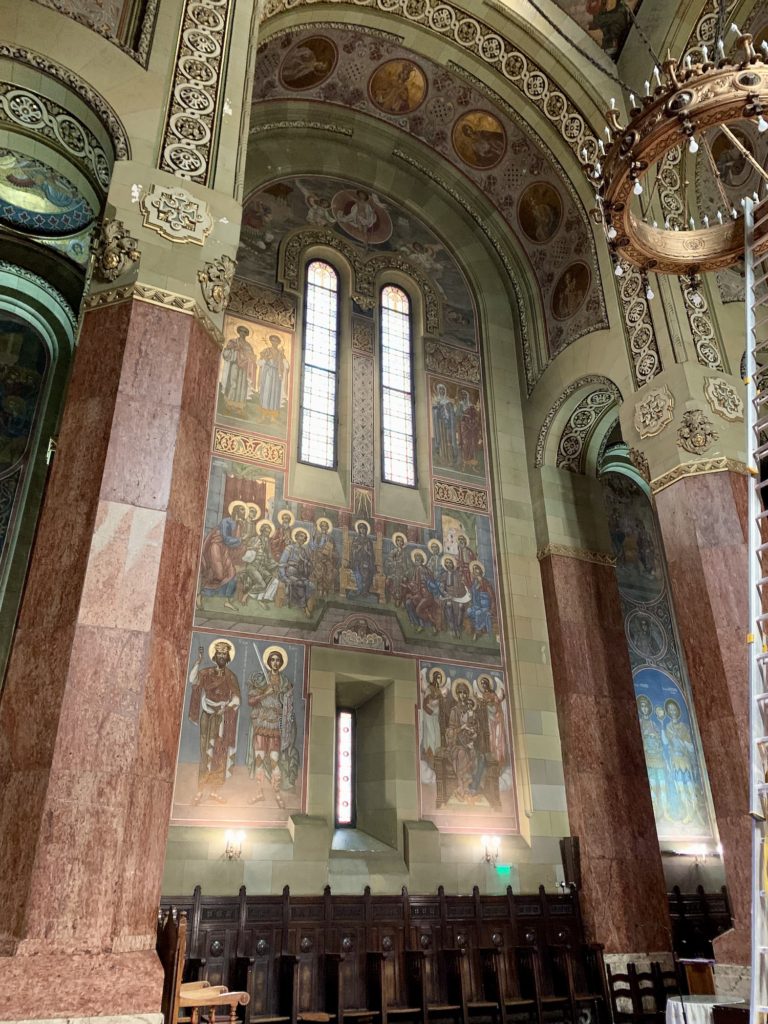
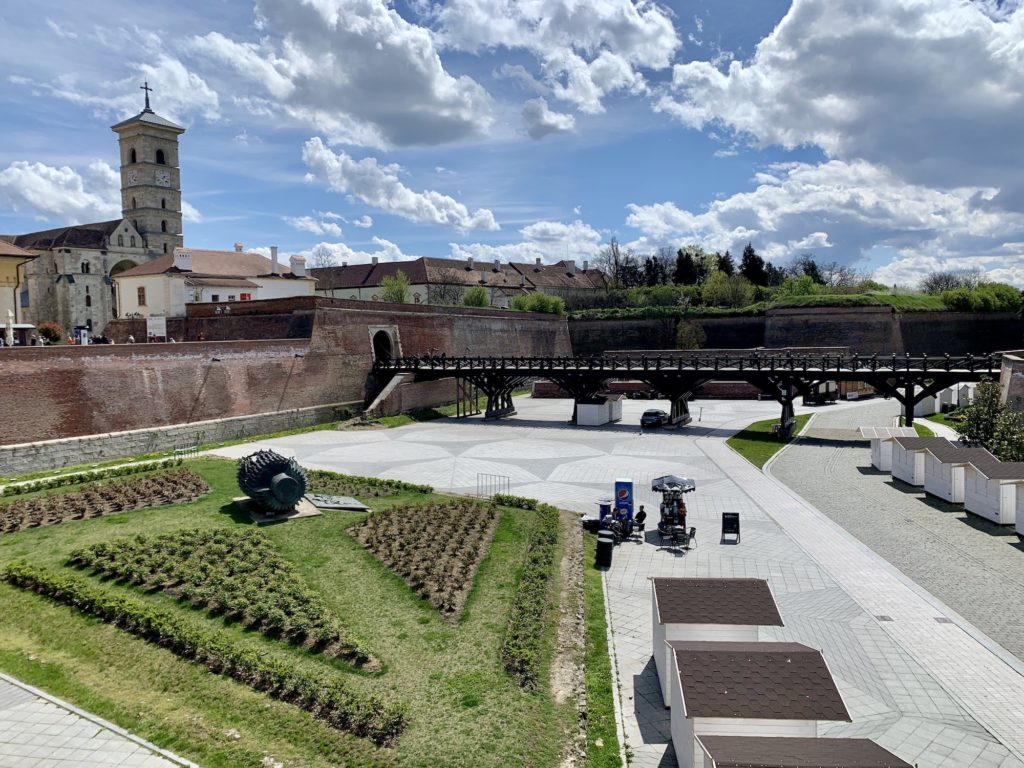
Next, we cross the old drawbridge across the mote to Cetatea Alba Iulia (the city’s fortress). This is the third fortress built in this location; some foundations and ruins of the previous fortresses are still on the premises and being displayed. Of course, a church is the first building we encounter after leaving the entry way. The cobbled streets are even and well maintained; there are vendors offering food, arts and crafts, and souvenirs everywhere, and I see an alley of busts as well as many sculptures in the streets. The giant church bell symbolizes the unification of Romania.
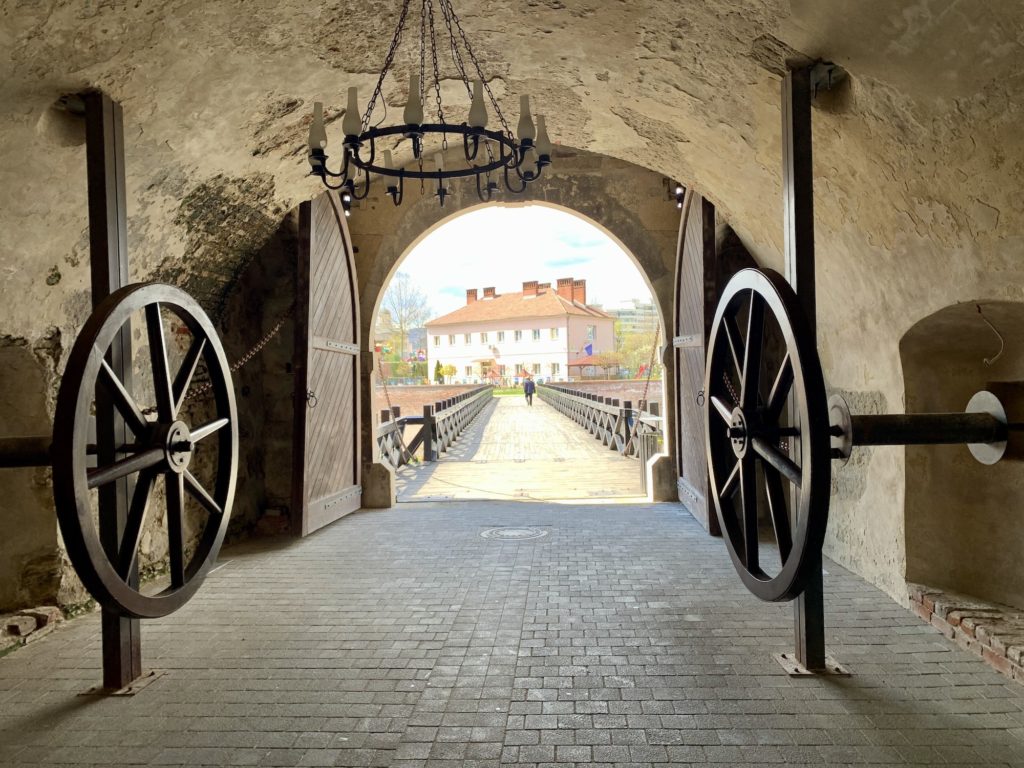
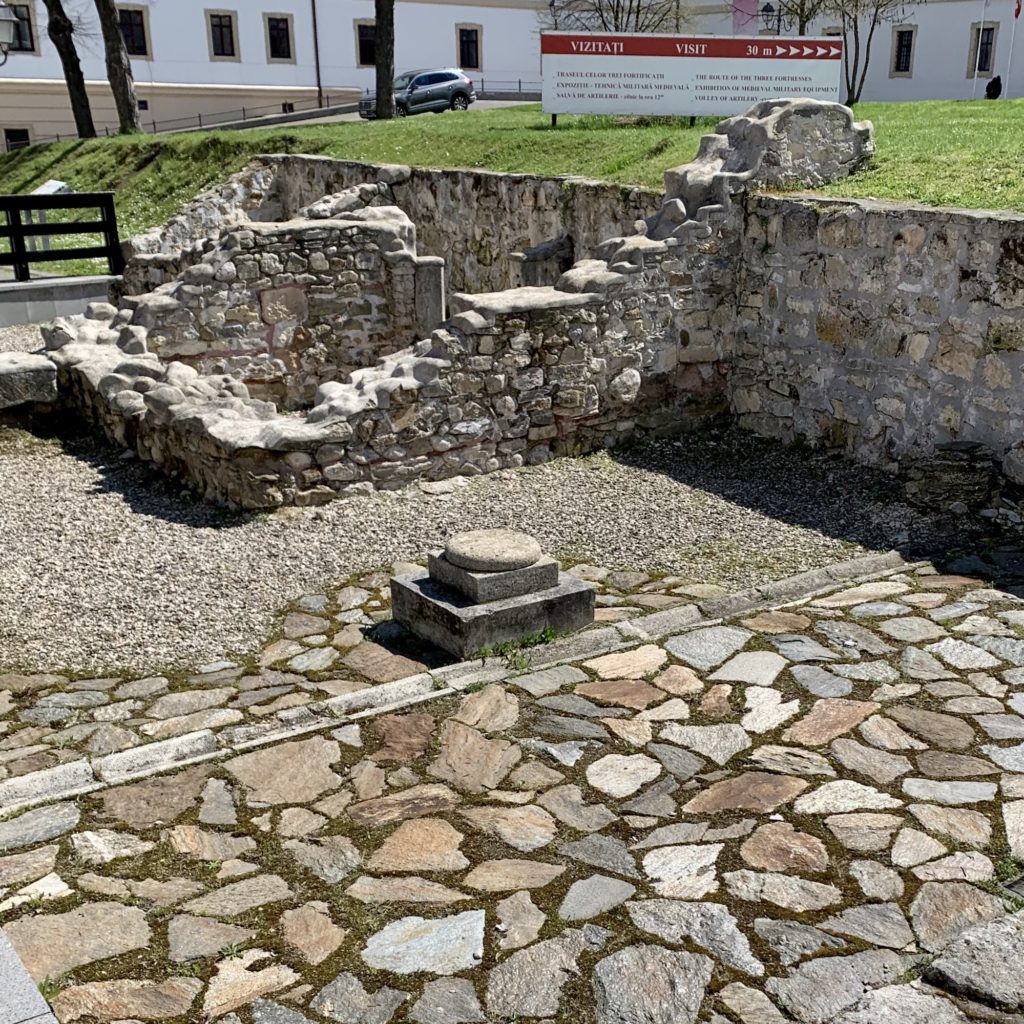
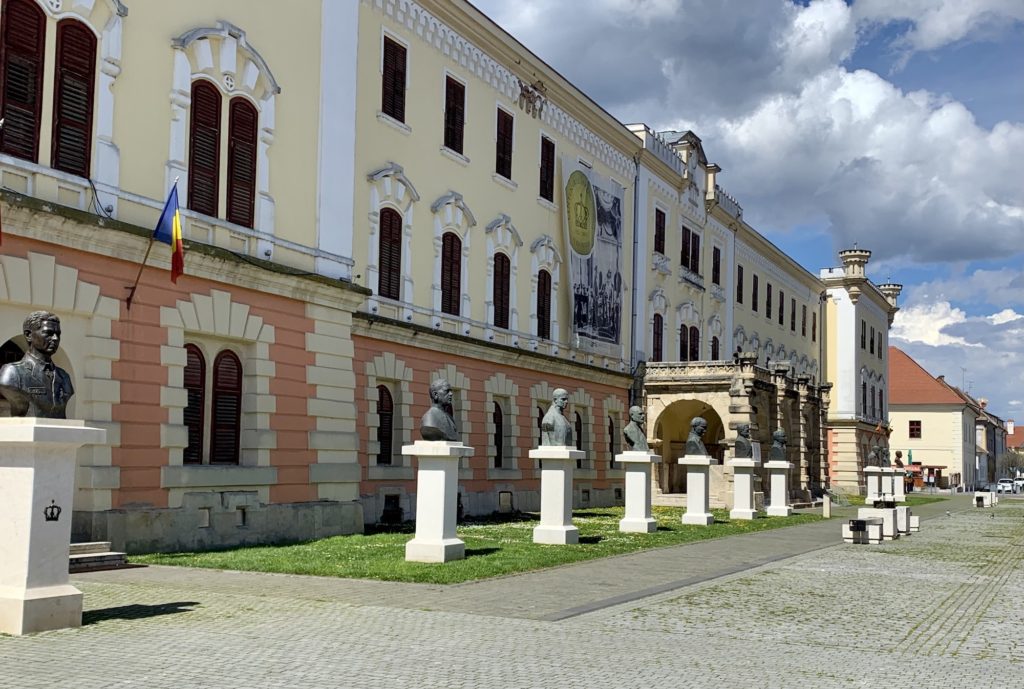
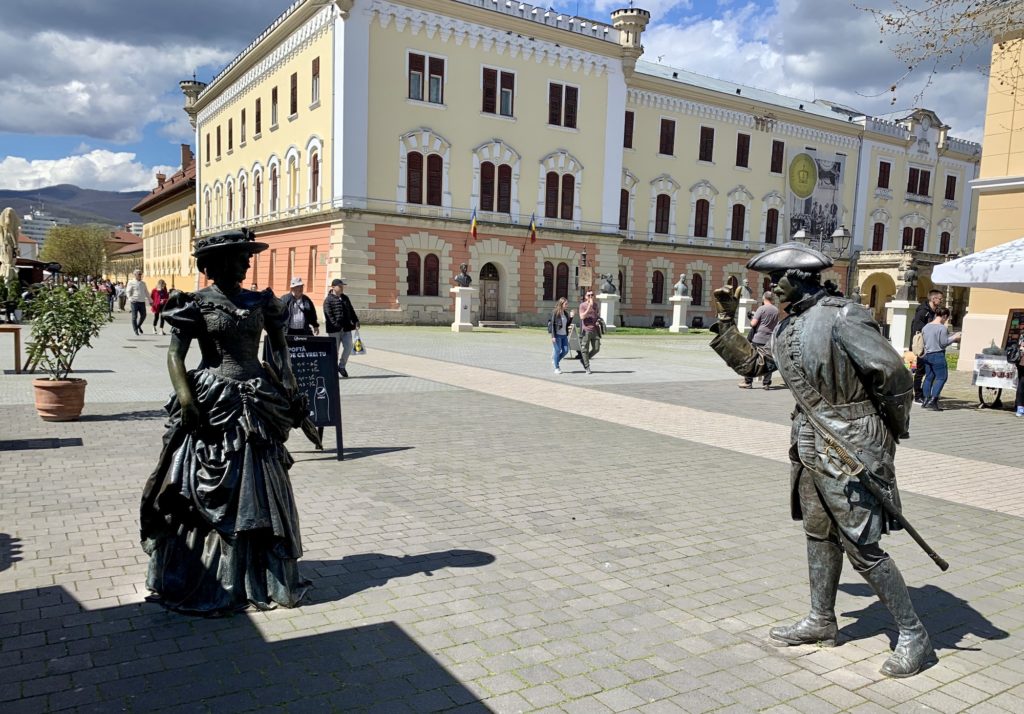
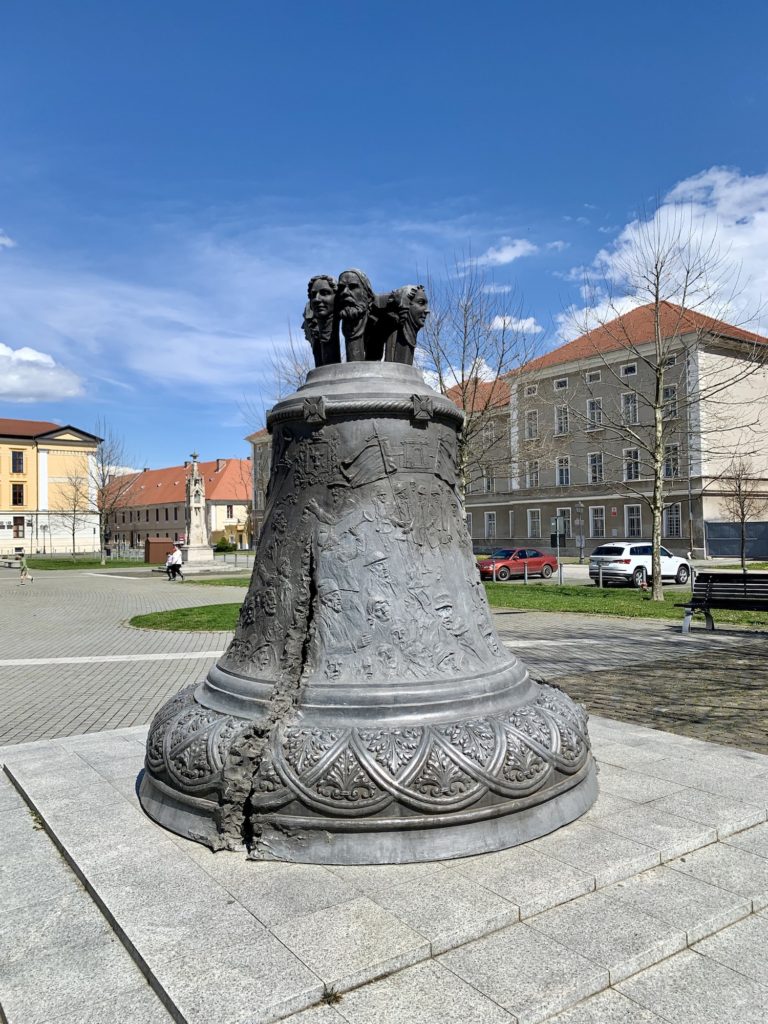
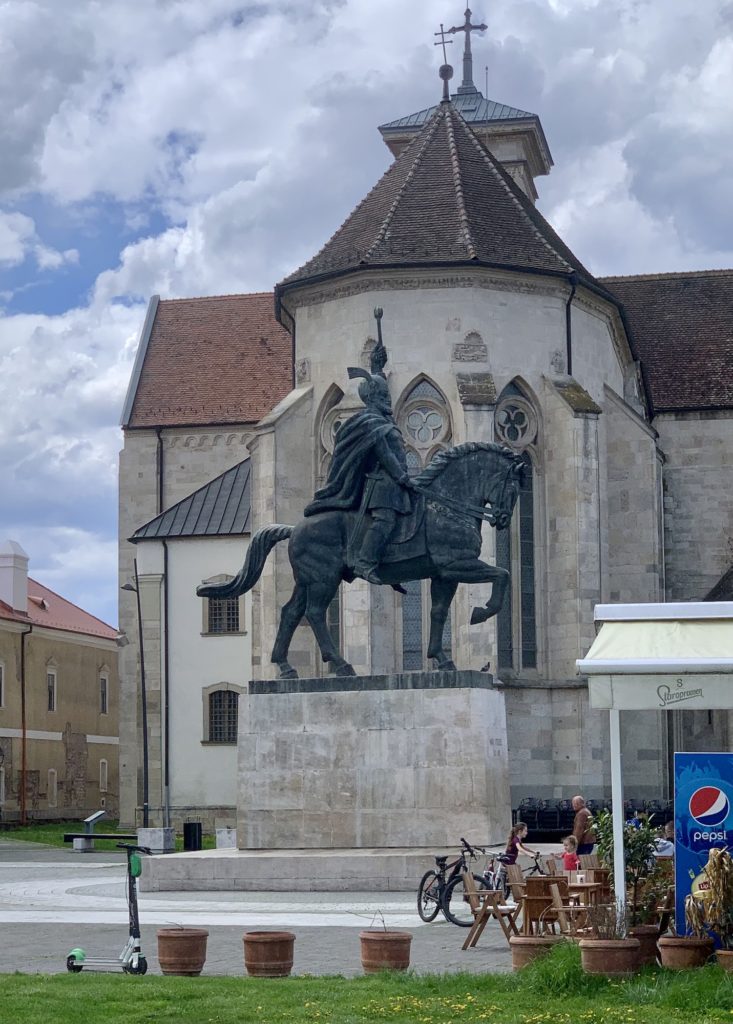
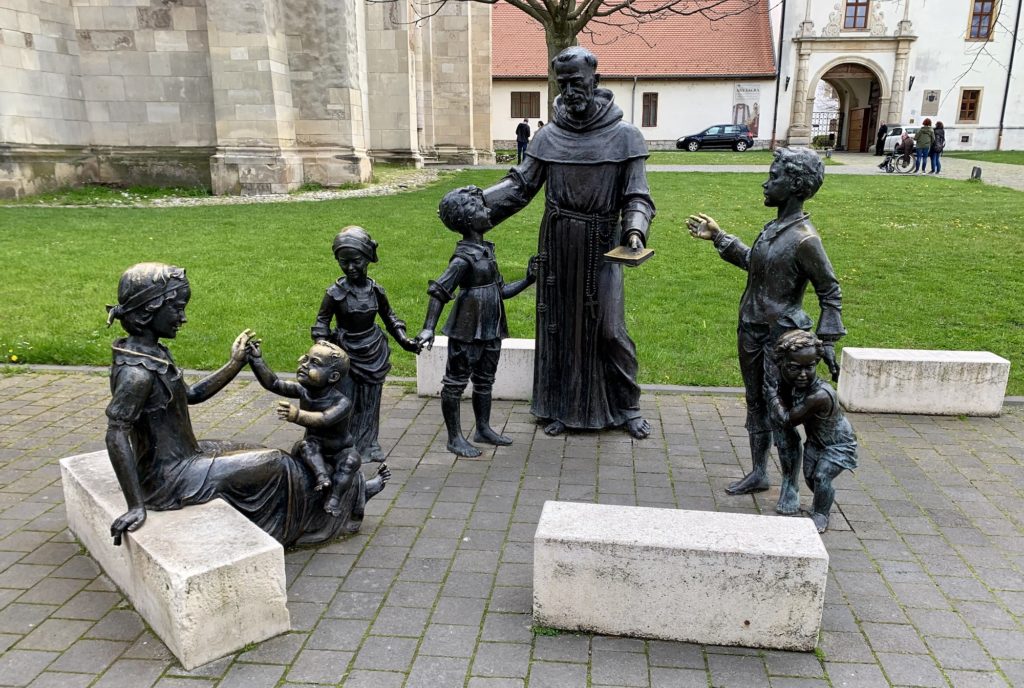

The entryway on the other side of the fortress has a baroque gate in the manner of a triumphal arch, also with drawbridge. Behind it is an obelisk in honour of Horea, Cloșca and Crișan, who led a revolt in 1784 (due to the poor conditions of the feudal serfs), which ultimately led to the abolishment of serfdom. The view down to the city is lovely from here, and we enjoy a moment in the sun.
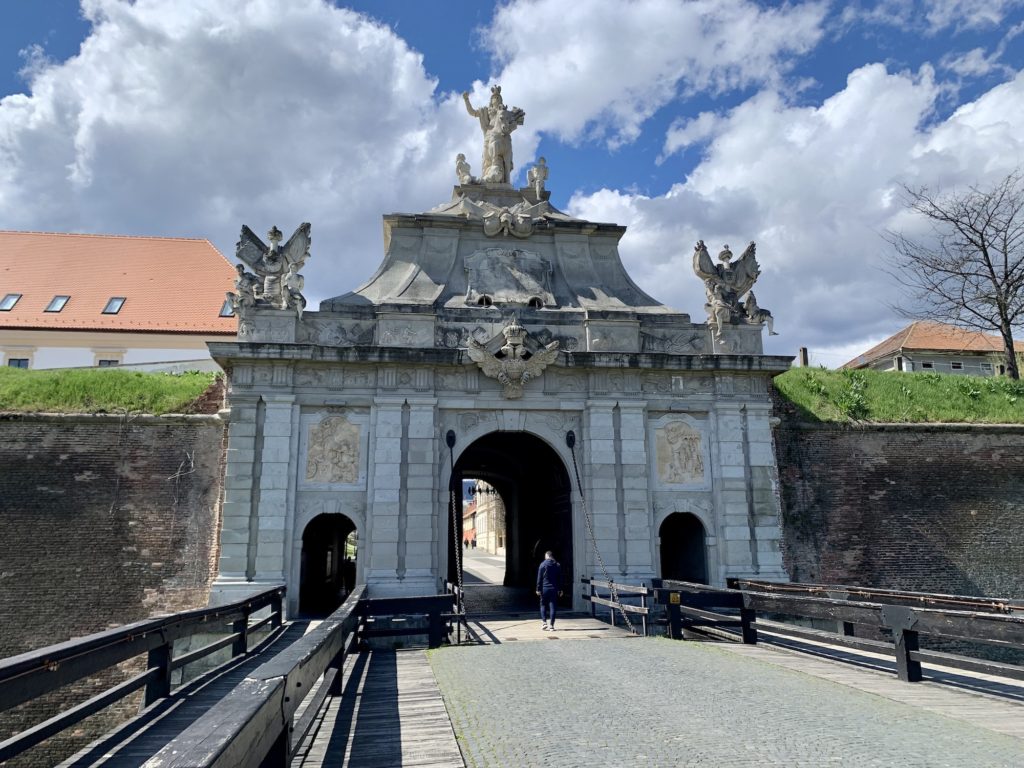
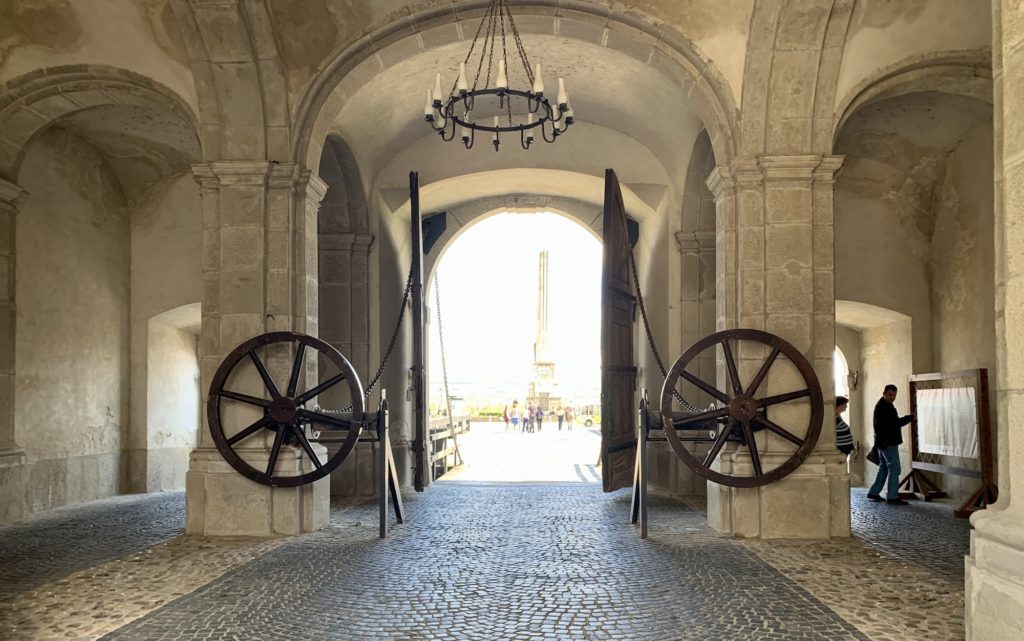
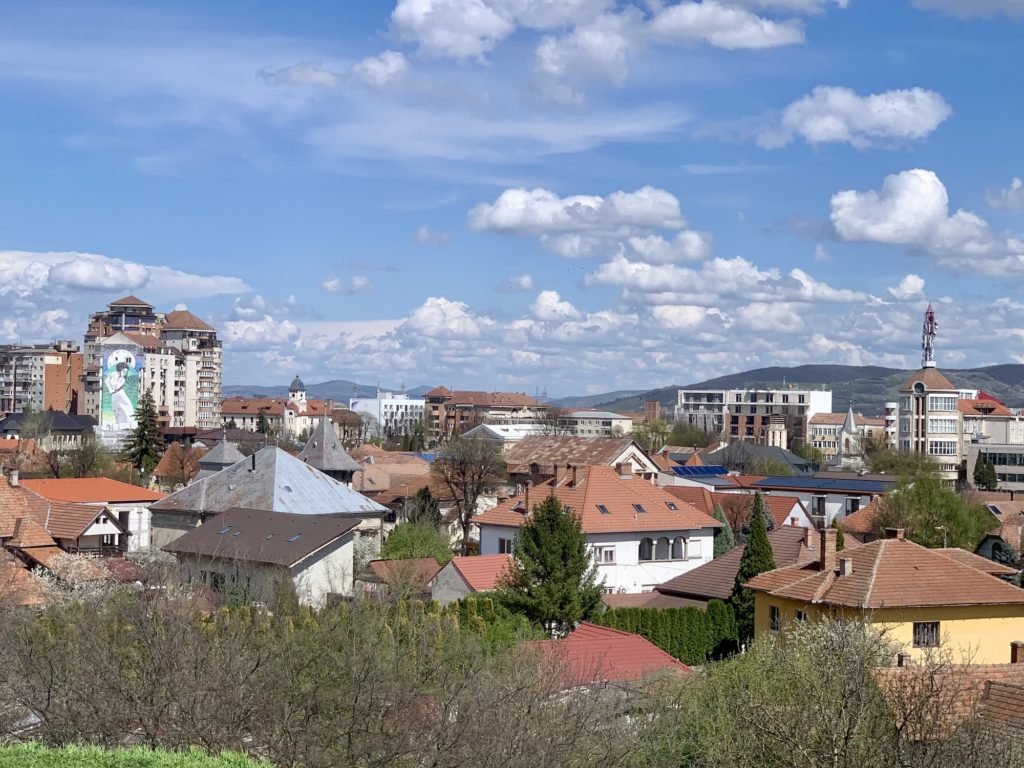
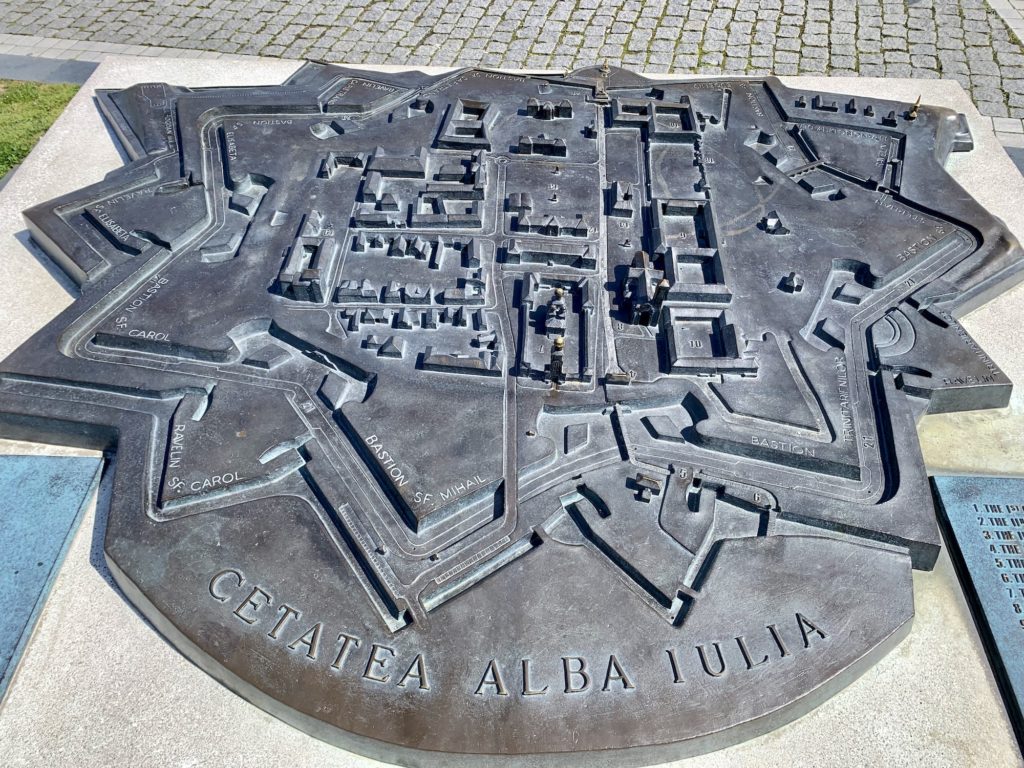

Too soon do we have to leave Alba Iulia in order to get to our next overnight tour stop in Reșița. We spend the next day there since everything is closed during Orthodox Easter. It rains cats and dogs while we are in this town, and its grey concrete buildings do not endear themselves to me. We walk across the main plaza through the rain, the remnants of a flower festival slowly starting to wilt, the fountain is hoarded off for construction or maintenance… no store nor coffee shop nor restaurant is open until we come across one ice cream parlour inviting patrons even in this rainy weather, and we gratefully go inside to dry off a little and enjoy a decent cup of ice cream. The lady tells us that it’s a tradition for this store to be open on Easter Day, no matter the weather. On our way back to the apartment, we come across a pub—they are not open, but invite us in for a drink anyway. We have a beer at our own table while the restaurant’s family has their family gathering. That was nice, but overall I cannot wait to leave Reșița again the next day.
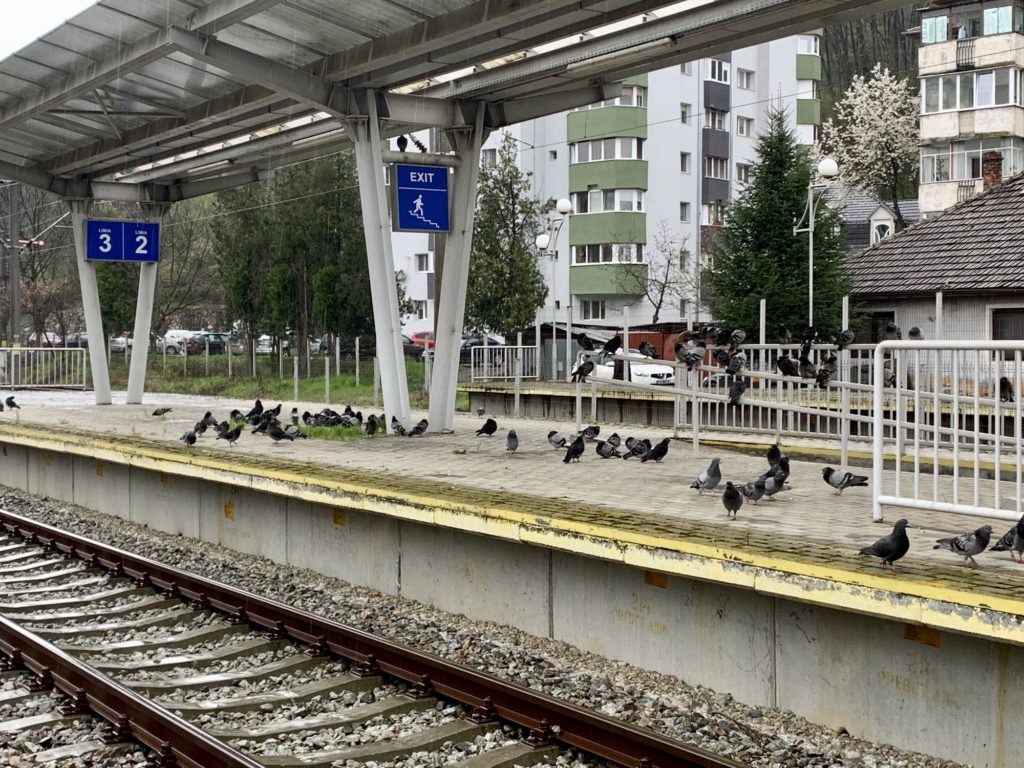


Very ornate church! Boy the tourist really have to plan a bring food if you arrive at a city during the christian holidays!! Beer and icecream sound good. Don’t know If I would have received the same hospitality??
C
Yet again Dee you have found some stunningly beautiful architecture, slightly concerned over the use of that ladder though glad that’s not my job 🙂
Hope Easter goes well for you & its not quite as bad as your expecting, take care & hope your next Town is interesting for you.